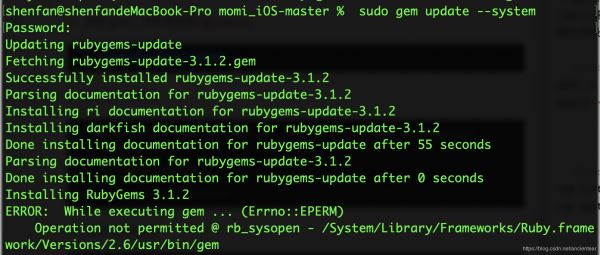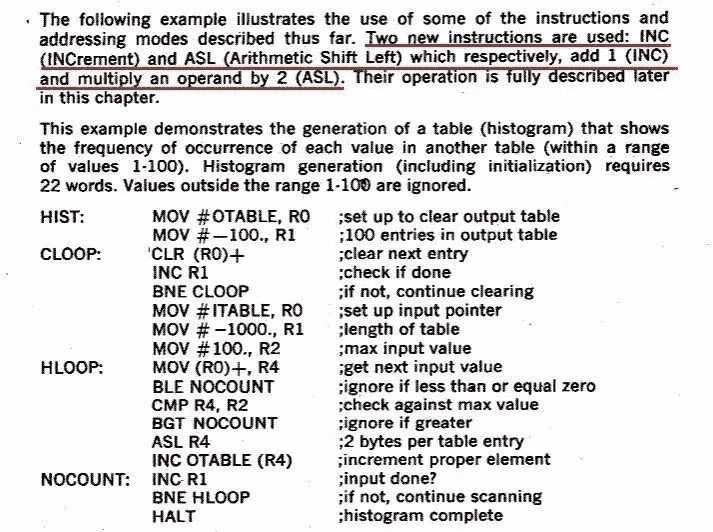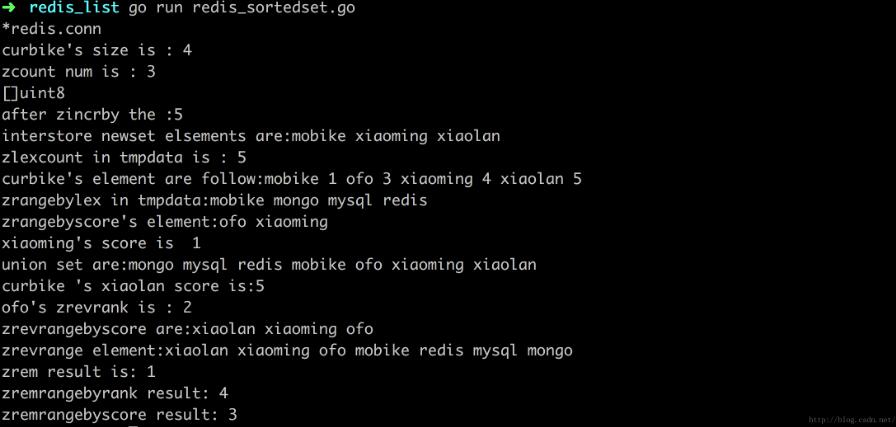引言
公司需要搭建一个日志收集服务器,用于将公司的项目日志汇总到一台服务器上面,方便查看和减轻各项目服务器压力。但是由于目前资源不够充足,所以放弃使用ELK、EFK。最后在调研尝试过Linux自带的Syslog和fluentd之后,Linux自带的Syslog虽然更简单,但是汇总的数据中会有乱码的情况(怀疑是Appender问题),并且将日志信息组合成Json格式比较麻烦,因此选择使用fluentd来做日志收集。
1. 搭建环境准备工作
选用fluentd来做日志收集选择使用源码来进行安装,并且需要安装一些依赖的插件,如Ruby等,下面依次介绍需要安装的组件。
1.1 安装ruby
下载ruby压缩包 ruby-2.6.5.tar.gz,版本:2.6.5,并解压
tar -zxvf ruby-2.6.5.tar.gz cd ruby-2.6.5
安装ruby,安装需要gcc
yum install -y gcc ./configure prefix=/export/source/ruby make && make install
安装完成后修改系统配置文件 /etc/profile,在最后添加ruby目录并加到path中
export RUBY_HOME=/export/source/ruby export PATH=$PATH:$JAVA_HOME/bin:$RUBY_HOME/bin
验证是否安装成功
[root@localhost ruby-2.6.5]# ruby -v ruby 2.6.5p114 (2019-10-01 revision 67812) [x86_64-linux]
显示ruby版本号,安装成功
1.2 获取fluentd源码
从github上拉取fluentd源码,github地址:fluentd
git clone https://github.com/fluent/fluentd.git cd fluentd
1.3 修改gem源
先查看当前默认源
gem source *** CURRENT SOURCES *** https://rubygems.org/
移除默认源
gem sources -r https://rubygems.org/
添加源,目前可用的有ruby-china的源,添加ruby-china源
gem sources -a https://gems.ruby-china.com https://gems.ruby-china.com added to sources # 查看当前源 gem source *** CURRENT SOURCES *** https://gems.ruby-china.com
更新缓存
gem sources -u
1.4 安装Bundle
gem install bundler
等待提示安装成功
1.5 构建fluentd
进入fluentd文件夹后,构建项目
[root@localhost fluentd]# bundle install Fetching gem... ... Bundle complete! 11 Gemfile dependencies, 37 gems now installed. Use `bundle info [gemname]` to see where a bundled gem is installed. [root@localhost fluentd]# bundle exec rake build fluentd 1.7.3 built to pkg/fluentd-1.7.3.gem. [root@localhost fluentd]# gem install pkg/fluentd-1.7.3.gem Successfully installed fluentd-1.7.3 Parsing documentation for fluentd-1.7.3 Installing ri documentation for fluentd-1.7.3 Done installing documentation for fluentd after 3 seconds 1 gem installed
安装完成
1.6 运行fluentd
[root@localhost fluentd]# fluentd --setup ./fluent [root@localhost fluentd]# fluentd -c ./fluent/fluent.conf -vv &
最后在控制台显示fluentd读取的配置文件信息并且打印相关日志。至此日志收集服务器所需要的fluentd已经搭建完成,接下来就是配置fluentd以完成日记收集功能。
2. 安装过程遇到的问题
2.1 安装bundler没有zlib包
ERROR: Loading command: install (LoadError)
cannot load such file -- zlib
ERROR: While executing gem ... (NoMethodError)
undefined method `invoke_with_build_args' for nil:NilClass
解决方案 安装zlib-devel
yum -y install zlib-devel
进入ruby源码文件夹,安装ruby自身提供的zlib包ruby-2.5.1/ext/zlib
cd ruby-2.6.5/ext/zlib ruby ./extconf.rb make make install
在make时会报错
make: *** No rule to make target `/include/ruby.h', needed by `zlib.o'. Stop.
修改目录中Makefile文件
zlib.o: $(top_srcdir)/include/ruby.h
改成
zlib.o: ../../include/ruby.h
到这里就可以make成功了。
2.2 没有openssl
错误描述:cannot load such file -- openssl
/export/source/ruby/lib/ruby/2.6.0/rubygems/core_ext/kernel_require.rb:54:in `require': cannot load such file -- openssl (LoadError) 29: from /export/source/ruby/bin/gem:21:in `<main>' 28: from /export/source/ruby/lib/ruby/2.6.0/rubygems/gem_runner.rb:59:in `run' 27: from /export/source/ruby/lib/ruby/2.6.0/rubygems/command_manager.rb:148:in `run' 26: from /export/source/ruby/lib/ruby/2.6.0/rubygems/command_manager.rb:178:in `process_args' ... /export/source/ruby/lib/ruby/2.6.0/rubygems/request.rb:84:in `rescue in configure_connection_for_https': Unable to require openssl, install OpenSSL and rebuild Ruby (preferred) or use non-HTTPS sources (Gem::Exception) 22: from /export/source/ruby/bin/gem:21:in `<main>' 21: from /export/source/ruby/lib/ruby/2.6.0/rubygems/gem_runner.rb:59:in `run' 20: from /export/source/ruby/lib/ruby/2.6.0/rubygems/command_manager.rb:148:in `run' 19: from /export/source/ruby/lib/ruby/2.6.0/rubygems/command_manager.rb:178:in `process_args' ...
解决方案
yum install openssl-devel -y
在ruby自身提供的额外文件夹中ruby-2.6.5/ext/openssl,执行ruby ./extconf.rb,再make
ruby ./extconf.rb make make install
make时出错
make: *** No rule to make target `/include/ruby.h', needed by `ossl.o'. Stop.
修改Makefile文件,在文件顶部添加top_srcdir = ../..
3. 完成需求及修改配置
在上一节中完成了在日志服务器上单间fluentd,该日志收集服务器有五个需求,通过修改fluentd等配置文件来完成相关的需求。
需求1 日志存放路径应用+日期划分
修改配置文件,在 模块中添加path属性,如果需要将匹配相同的tag输出到不同文件中则需要将 的@type设置为copy,然后再 块中添加 块并在 中添加path属性。
在path属性中可以读取过滤的tag,tag的格式为logback配置文件中的.,因此可以将应用名设定在logback配置文件中,然后再fluentd.conf中进行读取。在path中通过${tag}占位符读取客户端发送的tag,tag属性可以根据.切分为数组,例如tag为test.demo时,tag[0]表示test,tag[1]表示demo。对于时间的配置可直接在path路径中设置,并且在buffer块加上time及timekey配置,配置文件如下:
<store>
@type file
@id demo
path /data/log/${tag[3]}/${tag[4]}/%Y-%m-%d/${tag[4]}
symlink_path /data/tmp/${tag[3]}_${tag[4]}_data.log
append false
time_slice_wait 10m
time_slice_format %Y%m%d
<buffer tag, time>
flush_mode interval
flush_interval 30s
chunk_limit_size 5MB
timekey 1d
</buffer>
</store>
最后得到的目录如下
├── [ 21] dab │ └── [ 56] logdemo │ ├── [4.0K] 2019-10-14 │ │ ├── [3.2M] logdemo.20191014_0.log │ │ ├── [3.2M] logdemo.20191014_1.log │ │ ├── [3.5M] logdemo.20191014_2.log │ │ ├── [3.9M] logdemo.20191014_3.log │ │ ├── [4.3M] logdemo.20191014_4.log │ │ ├── [4.2M] logdemo.20191014_5.log ├── [ 27] sms │ └── [ 62] opapplication │ ├── [ 114] 2019-10-14 │ │ ├── [2.5M] opapplication.20191014_0.log │ │ ├── [4.3M] opapplication.20191014_1.log
需求2 存放日志文件按文件大小进行切分
修改配置文件,在match块中添加buffer块配置,配置内容如下
<match level.com.zhy.**>
@type file
@id demo
path /data/log/${tag[3]}/${tag[4]}/%Y-%m-%d/${tag[5]}/${tag[4]}_${tag[5]}
symlink_path /data/tmp/${tag[3]}_${tag[4]}_data.log
# 不追加日志文件
append false
<buffer tag, time>
# 刷新模式
flush_mode interval
# 刷新周期
flush_interval 10s
# 块大小限制
chunk_limit_size 5MB
timekey 1d
</buffer>
</store>
</match>
将buffer刷新模式修改为interval按固定时间间隔刷新,并且设置刷新的周期以及不追加文件。这样当buffer有内容时,每过10s将日志文件保存一次,或者当buffer块达到5MB就立即存一次,保证每个日志文件的大小都保证在5MB以内。生成的日志目录结构如下:
. ├── [ 21] dab │ └── [ 56] logdemo │ ├── [4.0K] 2019-10-14 │ │ ├── [3.2M] logdemo.20191014_0.log │ │ ├── [1.7M] logdemo.20191014_10.log │ │ ├── [1.9M] logdemo.20191014_11.log │ │ ├── [3.2M] logdemo.20191014_1.log │ │ ├── [3.5M] logdemo.20191014_2.log │ │ ├── [3.9M] logdemo.20191014_3.log │ │ ├── [4.3M] logdemo.20191014_4.log │ │ ├── [4.2M] logdemo.20191014_5.log │ │ ├── [4.5M] logdemo.20191014_6.log │ │ ├── [4.8M] logdemo.20191014_7.log │ │ ├── [4.8M] logdemo.20191014_8.log
需求3 按照日志等级划分日志
为方便查看各类等级日志的情况,需要在目录中添加日志等级并将相应的日志放入。在不修改客户端tag情况下,在fluentd服务端重新生成tag以包含日志等级,此时需要 rewrite_tag_filter 插件来完成重置tag。在使用插件前需要安装该插件
[root@localhost fluentd]$ fluent-gem install fluent-plugin-rewrite-tag-filter Fetching fluent-plugin-rewrite-tag-filter-2.2.0.gem Fetching fluent-config-regexp-type-1.0.0.gem Successfully installed fluent-config-regexp-type-1.0.0 Successfully installed fluent-plugin-rewrite-tag-filter-2.2.0 Parsing documentation for fluent-config-regexp-type-1.0.0 Installing ri documentation for fluent-config-regexp-type-1.0.0 Parsing documentation for fluent-plugin-rewrite-tag-filter-2.2.0 Installing ri documentation for fluent-plugin-rewrite-tag-filter-2.2.0 Done installing documentation for fluent-config-regexp-type, fluent-plugin-rewrite-tag-filter after 0 seconds 2 gems installed
然后在fluent.conf配置文件中配置
<match com.zhy.**>
@type rewrite_tag_filter
<rule>
key msg
pattern ^\[(\w+)\]
tag level.${tag}.$1
</rule>
</match>
原来的输入日志格式如下
2019-10-14 14:44:09.000000000 +0800 com.zhy.sms.opapplication: {"msg":"[ERROR] 这是error日志...error\r\n","level":"ERROR","logger":"com.sk.controller.LogController","thread":"pool-3-thread-397","message":"这是error日志...error"}
在日志信息中msg、level对应的值都包含日志等级,因此可以从键msg、level中选出日志等级来组成新的tag,这里选则提取msg对应的value中的日志等级。配置文件中的pattern属性所写正则表达式就是用来匹配msg中[]中的值的,然后再tag上将取出来的日志等级通过$1放到原来tag的最后面。
注意:如果match上的匹配规则和修改后的tag能够对应,则会一直进行匹配,从而导致修改tag失败,如下
<match com.zhy.**>
@type rewrite_tag_filter
<rule>
key msg
pattern ^\[(\w+)\]
tag ${tag}.$1
</rule>
</match>
此时修改后的tag仍然是以com.zhy开头,所以会导致修改失败,所以在新的tag前加上level前缀,level可自定义
<match com.zhy.**>
@type rewrite_tag_filter
<rule>
key msg
pattern ^\[(\w+)\]
tag level.${tag}.$1
</rule>
</match>
需求4 将目录通过nginx映射出去
在nginx配置文件中增加server配置,在server中添加root属性,设置映射到服务器根目录下的/data目录中,location属性分为两步第一步开启文件浏览,第二步设置在浏览器文本格式显示文件内容
location /log {
autoindex on;
}
通过autoindex来开启文件浏览功能,配置客户端浏览路径为/log
location ^/log/.*\.log$ {
add_header Content-Type text/plain;
}
首先通过正则表达式匹配浏览路径,匹配规则以/log开头并且以.log结尾的文件,然后设置Content-Type为text/plain,在浏览器便可直接浏览日志内容,如果不设置将会弹出下载窗口进行下载,并且需要清理浏览器的缓存
server {
listen 8002;
autoindex_exact_size off;
charset utf-8;
autoindex_localtime on;
root /data;
location /log {
autoindex on;
}
location ^/log/.*\.log$ {
add_header Content-Type text/plain;
}
}
需求5 生成一个定大小的日志文件,并能够即时查看日志
需求是希望能够在项目文件夹下生成一个日志文件,与前面的日志文件不同的是该日志是显示当前日志内容,并且大小固定。由于fluentd的append生成的文件虽然能够追加到一个文件中,但是不能够固定大小,日志大小会无限膨胀。通过查阅资料,最后选择使用linux自带的日志转存工具 logrotate 来实现这需求。
由于目前linux都会自带logrotate,所以不需要安装,比较便捷。并且logrotate在github的更新还是比较活跃的。github地址:logrotate
1.修改配置
在使用logrotate之前,先修改fluentd配置,使其在每个项目中生成一个对应的即时日志文件。在 match 块中添加一个 store 块。
<store>
@type file
@id ImmediateLog
path /data/log/${tag[3]}/${tag[4]}/${tag[4]}_immediate
append true
<buffer tag>
path /data/tmp/${tag[3]}/${tag[4]}/${tag[4]}_immediate
flush_mode interval
flush_interval 5s
</buffer>
</store>
配置中主要是在对应项目文件夹下生成一个名为 appname_immediate.log 的日志文件,并且该日志文件用append追加内容,选择以5s为周期性刷新,由于是即时日志文件,所以刷新频率高。之所以不用immediate模式是因为考虑的服务器负载,如果立即刷新的话可能会造成负载较高,所以选用延迟几秒来追加日志内容
然后修改logrotate配置文件,器配置文件在 /etc/logrotate.conf 中,但是在该配置文件中不方便管理,因此可以自己写一个配置文件,保存到 /etc/logrotate.d 目录中,在该目录中已经保存有几个自带的logrotate配置。这里我们新建一个配置文件,命名 applog ,并在文件中添加配置项:
/data/log/*/*/*_immediate.log {
daily # 每天运行
rotate 3 # 转存文件最多三个
size 10M # 当待转存文件大于10MB时才转存
compress # 压缩转存文件
copytruncate # 复制转存文件并且清空原文件
}
logrotate配置文件中第一行表示在配置转存文件的路径,这里转存的是在/data/log目录下的所有以_immediate.log结尾的文件,路径配置可以使用通配符。其余配置见注释,这里主要的作用时每天转存一次日志文件,当文件大小超过10MB时转存,并且进行压缩,转存文件最多存在3个。其余配置参考官网:logrotate配置详解
在完成配置后,可以通过命令查看配置文件是否正确
# -d:debug模式,校验配置文件 logrotate -d /etc/logrotate.conf
运行后会在控制台显示所读取配置文件、转存信息等。如果想看实际效果,将命令中的-d变为-f强制执行。运行-f命令后会在应用对应的immediate.log目录中生成一个以日期结尾的压缩文件,并且原来的日志文件被清空。这时logrotate配置完成。
2.logrotate执行时间
logrotate是通过cron定时任务执行的,查看cron配置文件可以看到定时任务的执行时间,CentOS使用的是anacron,配置文件在 /etc/anacrontab 中
# /etc/anacrontab: configuration file for anacron # See anacron(8) and anacrontab(5) for details. SHELL=/bin/sh PATH=/sbin:/bin:/usr/sbin:/usr/bin MAILTO=root # the maximal random delay added to the base delay of the jobs RANDOM_DELAY=45 # the jobs will be started during the following hours only START_HOURS_RANGE=3-22 #period in days delay in minutes job-identifier command 1 5 cron.daily nice run-parts /etc/cron.daily 7 25 cron.weekly nice run-parts /etc/cron.weekly @monthly 45 cron.monthly nice run-parts /etc/cron.monthly
配置文件中 START_HOURS_RANGE=3-22 表示定时任务开始时间,默认是在3点到22点之间, RANDOM_DELAY=45 表示启动任务后的最大随机延迟时间,默认最大延迟45分钟执行。最后三行是对于不同的定时任务配置,在cron.daily行就是定义每天的定时任务执行方式,每天一次,并且强制延迟5分钟执行,所以默认配置一般会在凌晨三点过执行。
在这里修改START_HOURS_RANGE、RANDOM_DELAY以及cron.daily的delay,可以自定义每日定时任务的执行时间。
4. 遇到的问题
问题描述
在所有都配置好后,使用 logrotate -d 不报错,手动执行 logrotate -f 也能够生成转存文件,但是转存文件却不能按照配置每天自动生成。
查看cron日志(cron日志地址:/var/log/cron)发现每天的定时任务都会执行
Oct 16 3:00:47 localhost anacron[24471]: Job `cron.daily' started Oct 16 3:00:47 localhost run-parts(/etc/cron.daily)[24475]: starting logrotate Oct 16 3:00:50 localhost run-parts(/etc/cron.daily)[24484]: finished logrotate Oct 16 3:00:50 localhost run-parts(/etc/cron.daily)[24475]: starting man-db.cron Oct 16 3:00:51 localhost run-parts(/etc/cron.daily)[24495]: finished man-db.cron Oct 16 3:00:51 localhost anacron[24471]: Job `cron.daily' terminated
但是没有生成转存文件。
解决方案
出现该问题是由于selinux的安全策略导致的,只需要给转存日志所在的目录增加安全上下文 var_log_t 即可
chcon -Rv --type=var_log_t /data/log
执行上面命令会对/data/log目录中的所有文件添加安全上下文。之后再观察转存文件便能够成功生成。
以上就是Fluentd搭建日志收集服务的详细内容,更多关于Fluentd 日志收集的资料请关注好代码网其它相关文章!





